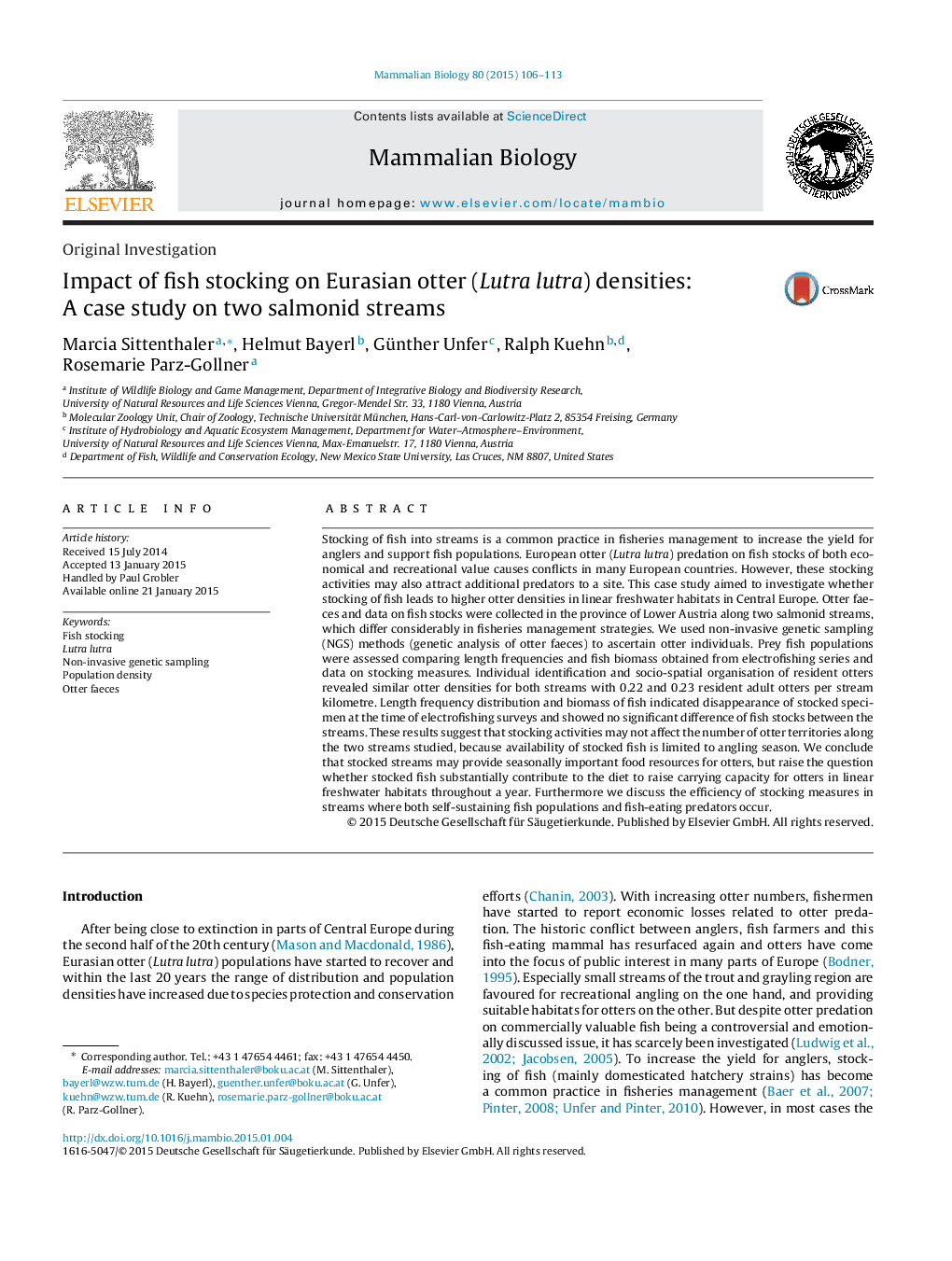| Article ID | Journal | Published Year | Pages | File Type |
|---|---|---|---|---|
| 2193601 | Mammalian Biology - Zeitschrift für Säugetierkunde | 2015 | 8 Pages |
Stocking of fish into streams is a common practice in fisheries management to increase the yield for anglers and support fish populations. European otter (Lutra lutra) predation on fish stocks of both economical and recreational value causes conflicts in many European countries. However, these stocking activities may also attract additional predators to a site. This case study aimed to investigate whether stocking of fish leads to higher otter densities in linear freshwater habitats in Central Europe. Otter faeces and data on fish stocks were collected in the province of Lower Austria along two salmonid streams, which differ considerably in fisheries management strategies. We used non-invasive genetic sampling (NGS) methods (genetic analysis of otter faeces) to ascertain otter individuals. Prey fish populations were assessed comparing length frequencies and fish biomass obtained from electrofishing series and data on stocking measures. Individual identification and socio-spatial organisation of resident otters revealed similar otter densities for both streams with 0.22 and 0.23 resident adult otters per stream kilometre. Length frequency distribution and biomass of fish indicated disappearance of stocked specimen at the time of electrofishing surveys and showed no significant difference of fish stocks between the streams. These results suggest that stocking activities may not affect the number of otter territories along the two streams studied, because availability of stocked fish is limited to angling season. We conclude that stocked streams may provide seasonally important food resources for otters, but raise the question whether stocked fish substantially contribute to the diet to raise carrying capacity for otters in linear freshwater habitats throughout a year. Furthermore we discuss the efficiency of stocking measures in streams where both self-sustaining fish populations and fish-eating predators occur.
